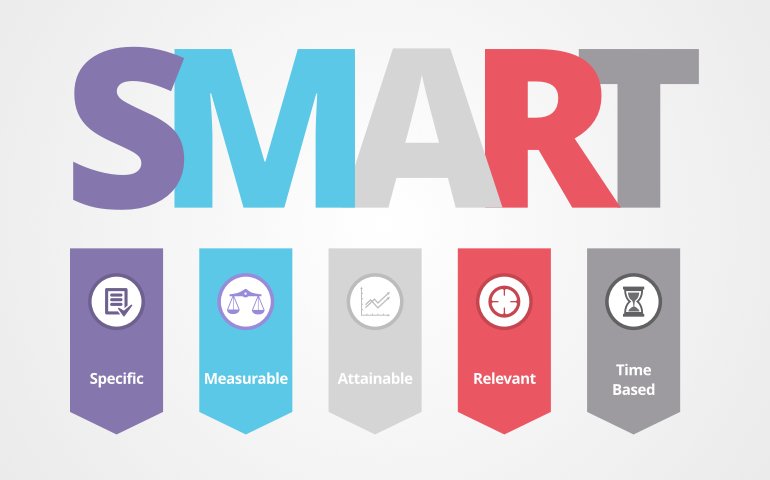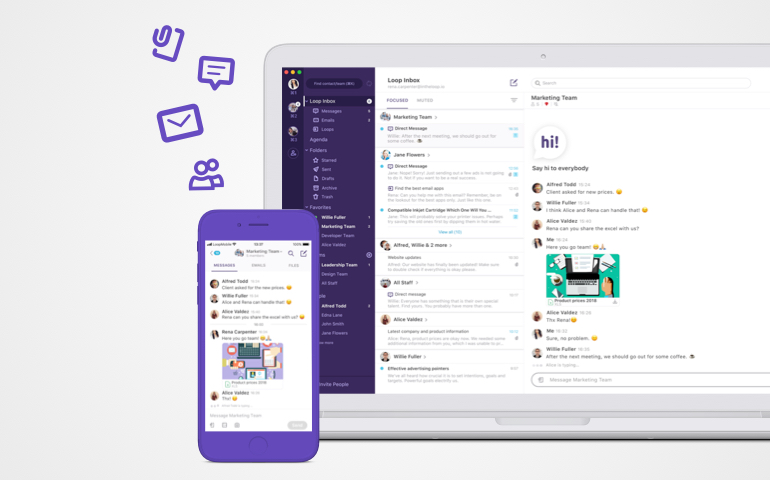1. Communication takes a rude turn
While it’s human nature to experience some form of negative feelings from time to time, certain emotions (especially if your team expresses them often) should set off red flags. Anger, for example, is very rarely a first-time response and it more often signifies an ongoing frustration. Note: these frustrations are often displayed with a few sarcastic remarks which can be easily missed.
Anxiety is another sign. It could stem from personal problems, but it can also mean your team members are overwhelmed, overworked, or bullied. Speaking of bullying – any rude, demeaning communication, even just a passive aggressive email has no place in a professional environment and points towards an issue worth addressing. Same goes for gossiping. While sharing information serves some function inside a team, this kind of dishonest communication has proven to be a truly toxic habit that tears teams apart.
In a rigorous orientation, employees are asked to describe things they hated about other places they worked. At the top of the list is always gossip and politics.
Harvard Business Review
And how about that super eager employee who runs towards you with insider information about every other team member? Not a good sign! Tattling on other team members signifies a lack of trust and respect towards others.
2. You have tasks that don’t belong to anyone
The need to sync and get approval about routine tasks is the first, mild indication of lack of responsibility in a team. The reason behind it could be low professional confidence or prolonged micromanagement that makes people believe they can’t do anything right.

Things get more serious if you notice that people are shifting blame or, worse, constantly blaming one unlucky scapegoat. Has it got to a point where certain tasks are ignored or forgotten and nobody is willing to put their hand up?
If so, then you could be dealing with diffusion of responsibility This is a psychological phenomenon in which people are less likely to take action when in the presence of a large group of people. It can easily manifest itself in the workplace and has a significant impact on the team’s productivity.
3. Nobody ever disagrees with anything
Perhaps your team seems perfectly happy. There are no open conflicts, everyone is on the same page, and it seems as if people are functioning like a well oiled machine. That’s the dream team, right? Well, not necessarily!
Have you noticed any signs of self-censorship among team members? Perhaps someone starts a sentence only to stop mid-course and conclude that his idea is no good. Maybe those who dare to speak up and disagree are discouraged or even shunned – either professionally or in a »sitting alone during lunch« way (high school much?). The signs could be subtle or pointed towards the outside world – for example,
When teams become too coherent, they can start displaying a phenomenon called groupthink. The essence of this decision-making trap is the irrational pursuit of consensus above all other priorities1. Groupthink is more likely to occur under a powerful and charismatic leader or when group members are a lot alike. Stressful situation and moral dilemmas also increase the manifestation of groupthink.

It’s understandable and a part of common human desire of acceptance. Yet this significantly lowers the potential for new, fresh ideas for solving problems and can even lead to some pretty spectacular mistakes, some of which we’ve witnessed in the past.
A productive team needs different perspectives, members who challenge each other, and are willing to debate their opinions without the risk of being mocked or even penalized – it’s what we call the culture of critical thinking.
4. That spark is gone
It’s utopian to expect that people will come to work at 110% every day. However, a drop in motivation over a longer period should not go unnoticed.
Signs of a disengaged team are subtle at first – you may notice a lack of fun around the office. We’re talking no more excited chatter when a group solves a problem or simply no chatter at all. Or maybe you will start noticing a drop of interest in learning new things – your co-workers don’t want to attend any educational courses or training they used to enjoy.
Some signs are more obvious than others such as; tardiness or an increase in sick days. Not to jump the gun (sometimes these absences are coincidental), but these kinds of events are worth keeping an eye on.
A 5% increase in employee retention can generate a 25% to 85% increase in profitability.
Sage Research
Lack of motivation is also evident if productivity drops for no external reason or if you notice an increased number of complaints regarding the person’ attitude or performance. Lastly, once you get to the point where your workplace suffers from a large turnover, it’s time to think hard and act!
5. Problems are repeated ad nauseam
You feel like you’ve heard it a million times before – and you have! If your team is entangled in the same discussions, mistakes or questions then your team needs improving. The keyword, in this case, is »same,« meaning recurring issues that never get fully resolved.
Very often the reason behind this is a set of unclear goals, processes, responsibilities and poor collaboration. This means people are constantly shifting focus and wasting time on unnecessary tasks. They’re often looking for information for long periods of time and are constantly having to touch base on things that should already be clear.
So how to tackle teamwork that seems to be falling apart?
Set clear goals, vision, roles, and responsibilities and improve overall planning
Ask yourself: does every member of this team have a clear goal of where the business is heading and understands his or her role in the process?
Sometimes we get so caught up in the daily grind that we forget to communicate clear goals for a project. That makes it harder for the team to follow through and take the initiative when the team lead is not around to delegate. Does everyone know what their specific task and responsibility is?
Empower your team with clear goals and a precise vision. Make sure the goals are SMART and communicated. If we’re talking about long-term goals, it’s more than useful to print them out and keep them somewhere visible.

Next, it’s time to delegate tasks to your team. This step greatly depends on your type of organization, but make sure you always to include a deadline and expectations.
There are many tools for task management out there, make the best of them! However, don’t forget that sometimes the simplest solutions are the most efficient. Sitting down with a person and asking them about their role or checking if the deadline is feasible can work wonders. Same goes for writing general responsibilities on a board in the office.
Keep meetings on point
Regular short meetings (so-called team huddles) are very effective if done correctly. Some people may not be fans of this approach simply because of how much time they can take. However, team huddles are there to help everyone understand what the tasks are for the day or week. To make sure team huddles never run longer than planned, you need to start by politely stopping people who are overrunning (you can agree to use a special word/sign), and set another time and a place for a detailed
Not sure how to run a short meeting in the first place? Here’s a useful template, called the 5-minute Staff Briefing Plan to help you out! If you’re dealing with more than five tasks, it also makes sense to keep meeting minutes. Make sure they are short and structured so it’s easy to review the finished tasks at the next meeting. Concise format also encourages more people to read them.
Make collaboration easier
Inefficient communication and substandard collaboration cost more than £4 million to UK organizations with around 500 employees. That’s the equivalent of £8,000 per person lost every year in poor productivity.
Raconteur
When we talk about collaboration, we are talking about problem-solving with a group of people with different skillsets. That also included different outlooks on communication, which usually results in a plethora of different tools, combined with meetings, briefings, and (unfortunately) a fair bit of frustration and chaos.
It can be impossible to completely abandon certain ways of collaboration, such as face-to-face meetings (and it would be counter-productive, honestly). You can reduce their number though. And you should – they are largely unproductive. Executives even value up to 67% of all meetings as unproductive2!
Next step is to reduce the number of apps your team uses for daily communication. With the right tool, namely Loop Email, you can have emails, chats, contacts, and the entire team in one handy place – in one app.

By using Loops in Loop Email, you can keep the whole team “in the loop” and easily search inside team conversations for files, information, etc. It also offers team channels and chats in one platform, so gone are the days of switching apps and searching for that info on 3 different platforms.
Motivate and empower team members.
There are multiple possible reasons behind a drop in engagement, so tackling this problem is such a broad topic that we can’t possibly capture in a few paragraphs. Here are a few guidelines to help you engage your teammates though:
- Reassess your expectations. Are they perhaps unrealistic? Get some objective opinions and act accordingly.
- Quit the micromanagement. Sometimes you need to let things be done differently – it doesn’t mean they will be done badly.
- Empower employees and give them new, manageable challenges. It’s proven that the mild frustration when conquering challenges increases the level of happiness once we succeed. Boredom and a lack of challenges kill motivation!
- Communicate the trajectory. Let team members know where the path can lead them career-wise. People tend to be more motivated if they have a goal to reach.
- Address poor performance. Don’t let repeated bad behavior slip. That will only lead to people either following suit and starting to mimic it or to frustration because others will see it as favoritism and unfairness.
- Make it fun. If you can, offer some fun and relaxing activities to your employees. Don’t assume everyone likes the same thing – ask them what they would appreciate and see if you can provide it.
Some theorists have also turned to the champion of motivational studies, Mr. Abraham Maslowto understand the things that drive us in life and career.
Show appreciation.
There are two things people want more than sex and money: recognition and praise
Mary Kay Ash
If you want happy teammates, make sure to notice their efforts. Include private and public acknowledgment of their contributions. In private, you can add a more detailed explanation of how their work was important for the success of the project, while public displays of praise can be a bit shorter. Keep in mind that not everyone loves the spotlight, so don’t make people uncomfortable when you’re trying to compliment their work.
Rewards (monetary or in the form of perks) are another way of showing appreciation. If your sales team achieved a record sale and it’s a type of environment where rewards are not uncommon, include it. Take the team out for a meal or a fun event or give them an extra day off now and then.
If you want to learn more practical, hands-on solutions for improving your teamwork, read our article with 24 hacks for effective teamwork. You can implement many of them in a matter of
So what’s the state of your teamwork? We’ll be sharing more tips on improving your team communication and leadership, so join us on Facebook, Twitter or LinkedIn for more teamwork content!

















Add comment